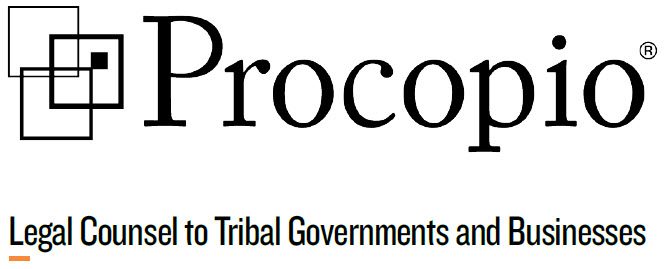By: Sandra L. Shippey | Partner | sandra.shippey@procopio.com
Theodore J. Griswold | Partner | ted.griswold@procopio.com
Stephanie Conduff | Law Clerk | stephanieconduff@procopio.com
Seminole Tribe of Florida Chairman James E. Billie, an ex-military and licensed pilot, used to land his plane on a desolate reservation road. His airplane allowed him to travel independently to and from the Seminole Tribe of Florida reservation as he worked to develop Tribal businesses. My, how things have changed. Today that road has become the Big Cypress Airfield. Privately owned by the Seminole Tribe of Florida, the airfield employs 18 staff members and is buzzing with 3 winged aircraft – including a 13 passenger Gulfstream IV – and 4 helicopters, and it is growing. It seems Chairman Billie was onto something.
The Seminole Tribe has begun to realize the business and governmental benefits of having its own airfield on its Reservation. Other tribes may want to take notice.
The operational costs of the Big Cypress Airfield are limited and the benefits substantial. The Tribal airfield uses existing reservation land, so there was no acquisition cost and no lease. Likewise, state property taxes on the airfield itself are not an issue and there are no state property or use taxes on the aircraft. Oh, and parking is free.
Many reservations struggle with a geographic challenge of isolation from business centers. The Seminole Tribe has mitigated this issue by making travel more efficient and flexible. The Big Cypress Airfield allows Tribal business leaders to use the Seminole Tribe’s own aircraft to visit its off-reservation business operations, conduct business, and attend intergovernmental meetings without being tied to a commercial airline schedule. This becomes important when Tribal executives are running both a business empire and a Nation. The Seminole Tribe has more than 4,000 citizens and booming businesses including the Hard Rock International purchased in 2007 from the Britain-based company Rank Group plc for an estimated $965 million. The unprecedented deal now includes 191 venues in 59 countries, including 145 Hard Rock Cafes, 21 Hard Rock Hotels and 10 casinos.
In addition, the Seminole Tribal government generates billions of dollars in economic impact in Florida and elsewhere through vendor contracts and indirect spending spun-off from its gaming and governmental operations, as well as its other business interests. For this tribal government, the efficiency of using its Aviation Department to fly Tribal executives to and from the Reservation is a valuable business tool for saving time and increasing revenues.
Tribal governmental services can be more efficient and immediate with the availability of aircraft. When West Nile virus was detected at the Brighton Reservation, the Seminole Tribe’s Aviation Department was able to immediately ramp up mosquito control with the Bell 206B helicopter through aerial applications of mosquito control throughout the reservation. Tribal citizens were quickly protected from encephalitis and other mosquito-borne illnesses.
The Big Cypress Airfield has long been used as a home base for fire suppression efforts. The Seminole Tribe, in conjunction with the Bureau of Indian Affairs, has created a fire suppression and response program that extends beyond the reservation jurisdictional boundaries. By servicing the surrounding community, the Tribe ensures the safety of both Native and non-Native communities.
The Aviation Department also supports the Seminole Police Department in providing aerial security on and off the reservation. During the Super Bowl activities at the Seminole Hard Rock Hotel, the Department provided aerial support for security and traffic control.
The Tribe also holds open houses at Big Cypress Airfield to inspire and attract Native youth to careers in aviation.
Tribal airfields and aircraft are not reserved for the largest of Tribal Nations. The benefits of a tribal airfield along with the right aircraft can assist even moderate sized reservations shorten the distance from the reservations to economic centers and the use of aircraft on and around the reservations can better serve tribal citizens. Does your reservation have a dusty road waiting for a new use?
A special thanks to Clinton A. El-Ramey, Director of the Aviation Department, at the Seminole Tribe of Florida, for his public service to Indian Country and the United States.
Sandy Shippey is co-chair of Procopio’s Aviation Practice Group and a member of the Native American Practice Group.
Ted is head of the Native American Law practice group and primary editor for the Blogging Circle. Connect with Ted at ted.griswold@procopio.com and 619.515.3277.

 Ted is head of the Native American Law practice group and primary editor for the Blogging Circle. Connect with Ted at ted.griswold@procopio.com and 619.515.3277.
Ted is head of the Native American Law practice group and primary editor for the Blogging Circle. Connect with Ted at ted.griswold@procopio.com and 619.515.3277.